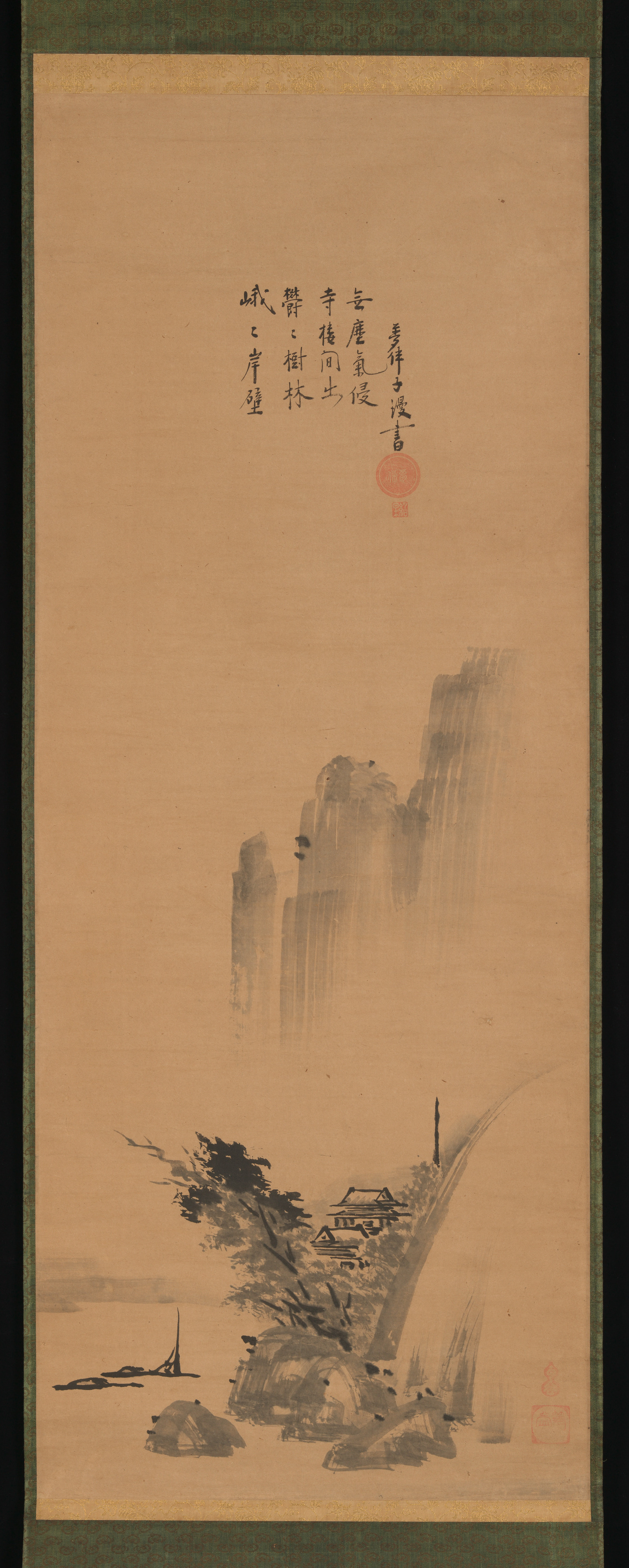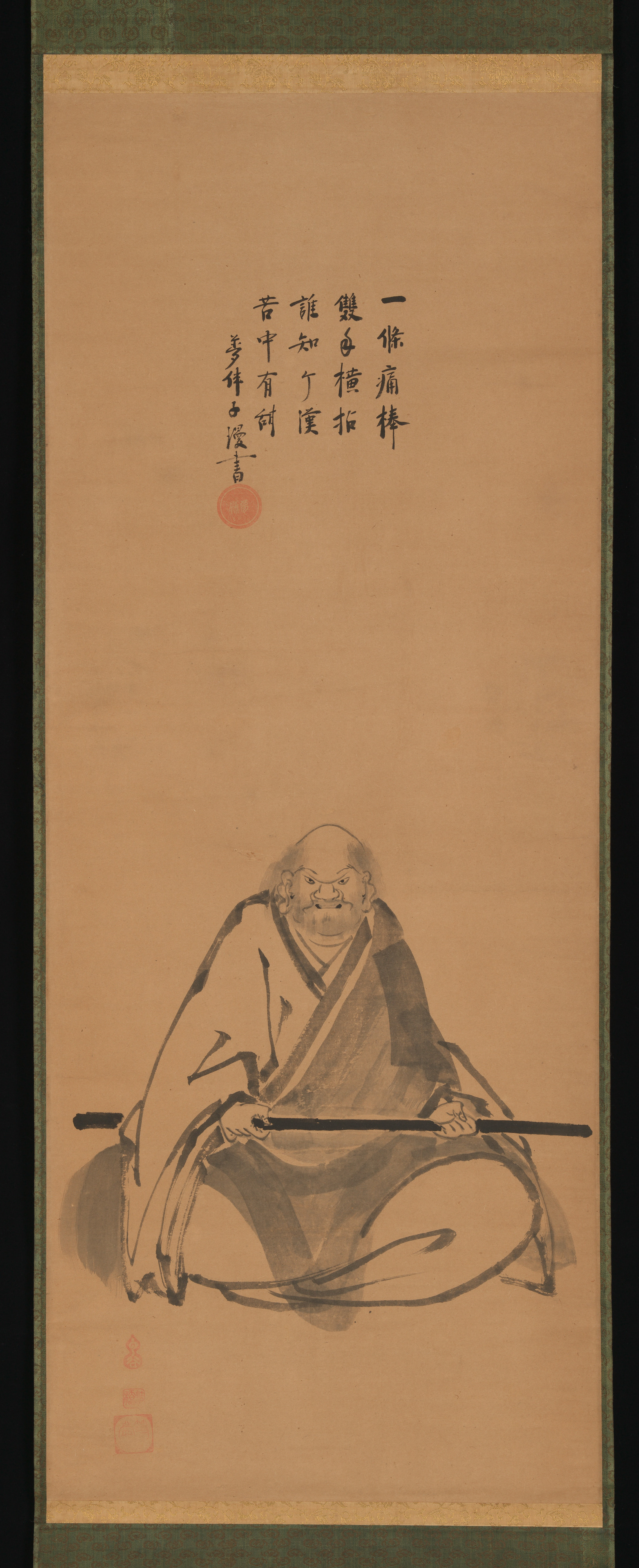Zen Master with Meditation Staff, and Chinese-Style Landscapes
Painting by Unkoku Tōeki Japanese
Calligraphy by Ten'yū Jōkō Japanese
Not on view
Pre-modern Japanese portraiture does not necessarily display accurate likeness, but the figure here, in the chinsō tradition of portraiture of Zen masters, seems individuated; it may be the Zen master Ten’yū Jōkō himself, or his master. He holds an “admonition staff” (shippei) in his hands for alerting sleepy students in meditation. Landscapes were common in Zen ink painting from the late fourteenth century, and it became a convention to create triptychs of work with a natural images flanking an image of a Buddhist deity or eminent monk. Here we find the common motifs of cliffs, rocky outcrops, pavilions, and a lone figure crossing a bridge. The painter Unkoku Tōeki was the son of Tōgan, founder of the Unkoku school which claimed descent from Sesshū, the great master of monochrome ink painting. In the early 1620s, Tōeki worked at the sub-temples of Daitokuji, where Ten’yū was active.
Each scroll features a poetic inscription by Ten’yū, who in 1625 became the 169th abbot of the Rinzai Zen temple complex Daitokuji, Kyoto. Ten’yū also went by the name “Muhanshi” 夢伴子, used in the signature here. Ten’yū was a student of Mankō Sōtei—also abbot of Daitokuji. Ten'yū founded Baigan’an at this temple complex and it is thought that he designed the famed south garden. He was a close colleague of the eminent Zen master Takuan Sōhō as attested by his written tribute, as well as an inscription on a statue of Takuan installed at Nanshūji, a branch temple of the complex located in Sakai where Ten’yū was abbot.
This image cannot be enlarged, viewed at full screen, or downloaded.
This artwork is meant to be viewed from right to left. Scroll left to view more.








